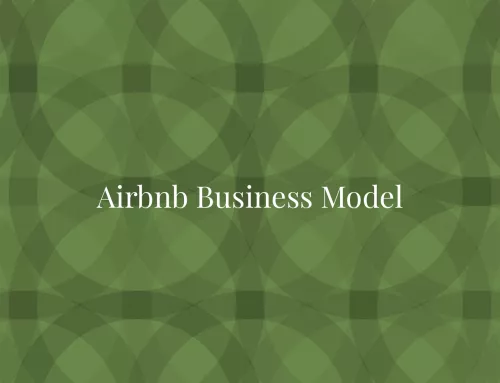Origin
The company was started as an idea by John Foley, a former Barnes & Noble e-commerce executive. He noticed that not only did people prefer instructor-led workouts, but they were more effective too. However, most people found it hard to carve out the time to go to the gym regularly. With that in mind, he pitched the idea of a home-based instructor-led workout to several colleagues. Together they officially formed Peloton Interactive, LLC in 2012. That same year, the company was able to raise nearly $4 million in seed money from various investors and was able to fund its first Kickstarter product in 2013. This spurred on further interest in the project and by 2014 they had rolled out their first line of stationary bikes.
Ownership
Peloton is controlled by the founder and former CEO of the company John Foley, who, along with his wife and other insiders, hold a majority of voting shares.
Mission
Peloton uses technology and design to connect the world through fitness, empowering people to be the best version of themselves anywhere, anytime.
How Peloton Makes Money
Peloton generates revenue from:
- Sales of Exercise Equipment: The most prominent revenue stream of the company comes from its sale of various types of high- and mid-range indoor exercise equipment like stationary bikes, treadmills, dumbbells, and so on. They also market various supportive technologies like the Peloton Guide, a form of body tracking technology, and the Peloton application
- Sales of Fitness Apparel and Accessories: Along with the sale of exercise equipment the company also markets a wide range of fitness apparel and accessories like fitness wear, gym bags, yoga mat, towels, water bottles, cycling shoes, biomonitoring devices, and so on. Though this is not a major part of their revenue stream, it does show significant room for growth and is a great branding opportunity
- Monthly Subscriptions: Another key part of the Peloton business model is the instructor-based fitness classes that users can take from home. The program offers thousands of classes by expert fitness instructors, all of which can be accessed after paying a monthly subscription fee. The basic plan is $39/month and is a compulsory part of the package once you buy the equipment
Customer Segments
- Fitness enthusiasts: The Peloton brand is aimed toward middle- to upper-class fitness enthusiasts who may not have the opportunity to attend gym fitness classes or find a home-based class to be more convenient. Over 60% of their customer demographic are between the ages of 24 to 44, with only 2% being over 65
- Celebrities and other high-profile members of society: The company is also popular among many celebrities and other prominent individuals because it allows them to work out effectively at home, avoiding the distractions and safety issues their status may have caused them by working out in a generic gym
- Tech-savvy individuals: Individuals who believe strongly in a more tech-forward society and support forward-thinking technological solutions to modern problems will feel at home with the Peloton brand.
Value Proposition
- Increased Workout Effectiveness: Instructor-led workouts are more effective than solo workouts, especially when the instructors include various experts and well-known names in the world of fitness
- Interactive Workout Session: Peloton instructor classes offer a more engaging home workout than most competitors. The platform also offers a social feature that allows you to share the workout with your close friends and build a sense of community as well as a friendly competition
- Enhanced Customer Experience: With professional instructors and a wide array of curated music, Peloton helps you realize that exercise can be an enjoyable activity as well
- Convenience: You’re not only paying for the equipment and services, but also for the convenience of being able to work out effectively at home
- Social Status and Branding: The Peloton brand has been endorsed by a respectable number of celebrities and prominent figures. Also, the trendy and prominent social image of the brand gives members a sense of belonging to a high-class community of individuals.
Channels
- Physical studios and showrooms
- Website
- App
- Social media
Customer Relationships
- Social media marketing
- Content marketing
- Dedicated personal assistance
- Self-service
- Fitness community
- Customer feedback solicitation
Revenue Streams
- Sales of fitness equipment, apparel, accessories, and technology
- Monthly subscription plans
Key Resources
- Fitness instructors
- Human resources
- Media collaborations
- Equipment
- Manufacturing partnerships
- Distribution network
- Infrastructure and studios
- Digital production
- Application
- Online presence
- Patents
Key Activities
- Product research and development
- Manufacturing
- Delivery
- Marketing, branding, and content creation
- Sales
- Customer service
- Fitness instruction classes
- Celebrity classes
- Special events
Key Partners
- Instructors
- Westin Hotels
- JBL (headphone company)
- Urbanears (headphone company)
- Eva (yoga block company)
- Roku TV
- ESPN
Cost Structure
- Personnel and instructor payments
- Administrative and operational costs
- Maintenance of physical infrastructure
- Branding and marketing
- Shipping
Competitors
- Life Fitness: Fitness equipment company that specializes in the manufacturing and distribution of stationary bikes and treadmills
- SoulCycle: Fitness company owned by the Equinox Group, that provides indoor cycling and spinning workouts
- NordicTrack: Fitness equipment manufacturing company that produces strength training equipment, treadmills, exercise bikes, ellipticals, and other fitness accessories
- Bowflex: Fitness equipment manufacturing brand based in Vancouver, owned and marketed by Nautilus, Inc.
SWOT Analysis
Strengths
- Strong of community
- Niche product with an innovative solution
- Strong social presence and smart branding techniques
- Convenience
- Enhanced customer experience
- Strong emotional loyalty and customer retention
- Vertical integration
Weaknesses
- Limited geographical market to the United States, Canada, the UK, and Germany
- Relatively high cost of products and services
- Narrow product and service range
- Over-dependence on 3rd-party partnerships
Opportunities
- Product diversification
- Geographical expansion
Threats
- Competition from emerging brands
- Current scandal surrounding the departure of co-founder John Foley from the role of CEO and various lawsuits leveled against the brand




